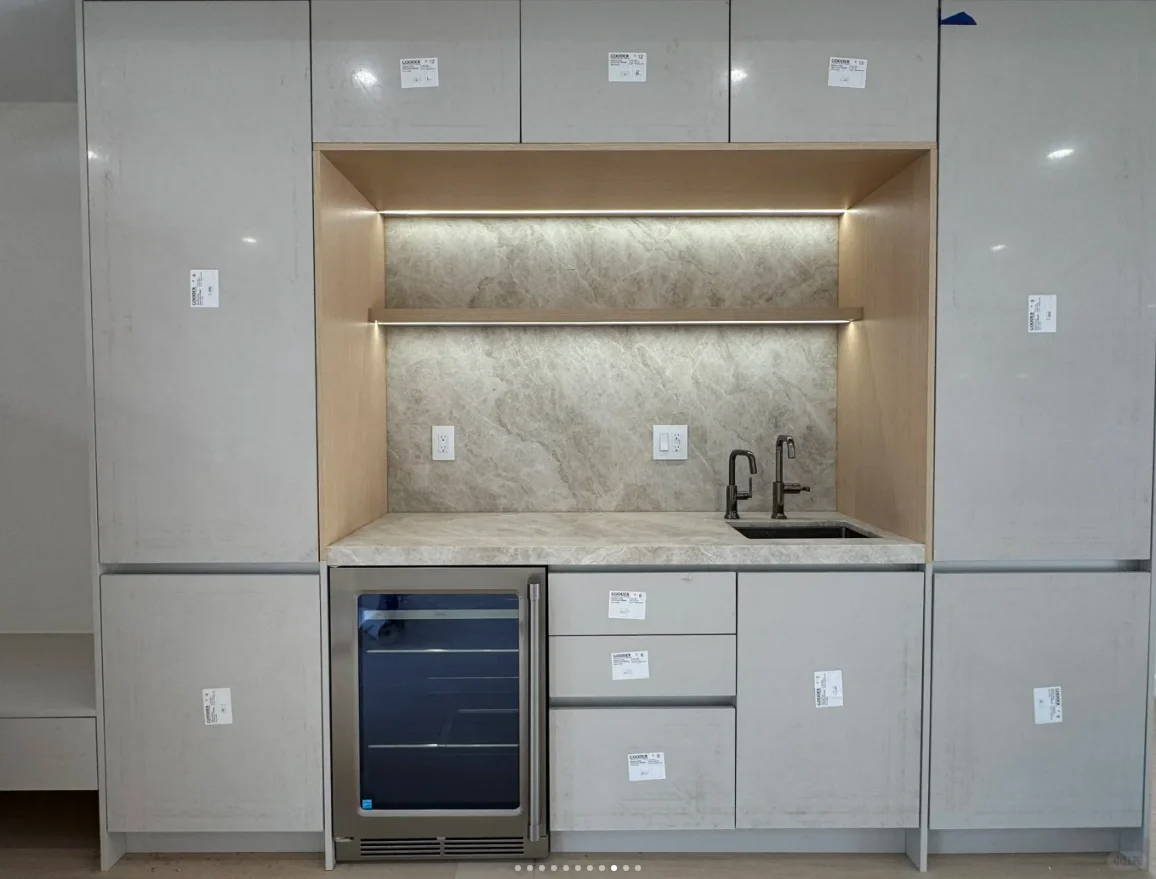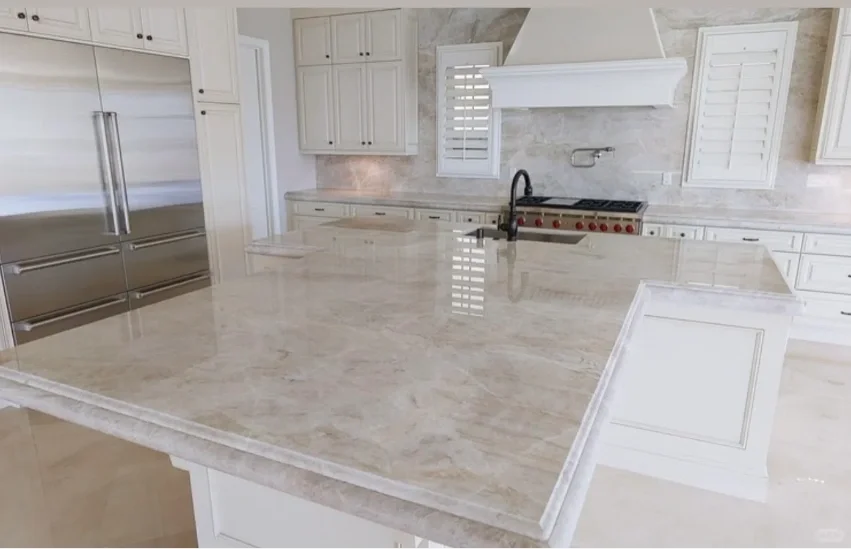Understanding the Luxury and Value of Premium Natural Stone
In the world of high-end natural stone surfaces, Taj Mahal quartzite stands as a testament to nature's artistic mastery. This prestigious stone has captured the attention of designers, homeowners, and architects worldwide for its remarkable beauty and exceptional durability. With its creamy white background adorned with subtle golden veining, this Brazilian quartzite offers an aesthetic that rivals the most expensive marble while providing superior strength and resilience.
As we move into 2025, the demand for Taj Mahal quartzite continues to rise, making it essential for potential buyers to understand current market prices, quality factors, and key considerations before making this significant investment. This comprehensive guide will walk you through everything you need to know about acquiring this luxurious natural stone.
Current Market Pricing Analysis
Base Price Ranges and Factors
The cost of Taj Mahal quartzite typically ranges from $75 to $200 per square foot, installed. This considerable price variation reflects multiple factors, including slab quality, thickness, and market availability. Premium grade slabs with exceptional patterning and minimal imperfections command higher prices, while standard grades may fall on the lower end of the spectrum.
Installation costs usually account for 20-30% of the total price, varying by region and complexity of the project. Additional factors such as edge profiles, cutouts for sinks or appliances, and special finishing techniques can further influence the final cost.
Regional Price Variations
Market prices for Taj Mahal quartzite fluctuate significantly across different regions. Coastal areas and major metropolitan centers often see higher prices due to increased demand and higher operating costs. States closer to major import hubs may offer more competitive pricing due to reduced transportation costs.
International shipping rates and currency exchange rates continue to impact overall costs, particularly as global supply chains evolve in 2025. Working with local suppliers can sometimes yield better pricing through reduced logistics expenses.

Quality Assessment Guidelines
Visual Characteristics
When evaluating Taj Mahal quartzite, several key visual elements determine its quality and value. The background should display a consistent creamy white color with minimal dark spots or patches. The characteristic golden veining should flow naturally across the surface, creating an elegant, marble-like appearance.
High-quality slabs exhibit minimal color variation between pieces, making it easier to achieve seamless installations across larger surfaces. The stone should also be free from significant fissures, heavy staining, or irregular pattern disruptions.
Physical Properties
Superior Taj Mahal quartzite slabs demonstrate excellent structural integrity with minimal natural fissures. The material should have a Mohs hardness rating of 7 or higher, ensuring outstanding durability for daily use. The stone's crystalline structure should be tight and uniform, contributing to its strength and resistance to etching.
Professional fabricators can assess the material's quality by examining its density, porosity, and internal structure. These factors significantly impact the stone's long-term performance and maintenance requirements.
Installation and Fabrication Considerations
Professional Requirements
Working with Taj Mahal quartzite demands specialized expertise and equipment. Professional fabricators must possess experience specifically with high-end quartzite to ensure proper handling and installation. The material's hardness requires diamond-tipped tools and precise cutting techniques to prevent chipping or damage.
Experienced installers understand the importance of proper support structures and seam placement, particularly for large installations. They can also advise on the best edge profiles and finishing options to complement your design vision while maintaining the stone's structural integrity.
Project Timeline Planning
A typical Taj Mahal quartzite installation project requires careful planning and execution. The process usually spans 2-4 weeks from initial template to final installation. This timeline includes material selection, fabrication, and installation phases, with additional time needed for any special orders or custom features.
Proper project management ensures all necessary supports are in place, seams are strategically positioned, and any special features are properly incorporated into the final design. Rushing the process can lead to costly mistakes and compromise the installation quality.
Maintenance and Long-term Value
Daily Care Requirements
While Taj Mahal quartzite is remarkably durable, proper maintenance ensures its lasting beauty. Daily cleaning requires only warm water and a pH-neutral stone cleaner. Avoid acidic or abrasive cleaning products that could potentially damage the stone's surface over time.
Regular sealing is essential to maintain the stone's resistance to staining and etching. Most installations benefit from annual resealing, though high-use areas may require more frequent treatment. Professional cleaning services can help maintain the stone's optimal appearance.
Investment Returns
Taj Mahal quartzite often provides excellent return on investment through increased property value and long-term durability. Well-maintained installations can last for decades while maintaining their aesthetic appeal. The material's timeless beauty and natural elegance continue to attract high-end buyers and design enthusiasts.
As sustainable and natural building materials gain importance, the value of premium quartzite installations is expected to appreciate. The stone's durability and low maintenance requirements make it an increasingly attractive option for luxury renovations and new construction projects.
Frequently Asked Questions
How does Taj Mahal quartzite compare to marble in terms of durability?
Taj Mahal quartzite significantly outperforms marble in terms of hardness and durability. While marble typically rates 3-4 on the Mohs scale, quartzite rates 7-8, making it much more resistant to scratching, etching, and daily wear. This superior durability makes it an excellent choice for high-traffic areas where marble might show signs of wear more quickly.
Can Taj Mahal quartzite be used outdoors?
Yes, Taj Mahal quartzite is suitable for outdoor applications in most climates. Its crystalline structure and low porosity make it highly resistant to freezing, thawing, and UV exposure. However, proper sealing and maintenance are crucial for outdoor installations to ensure long-term performance and beauty.
What makes some Taj Mahal quartzite slabs more expensive than others?
Price variations among Taj Mahal quartzite slabs primarily depend on visual characteristics, size, and quality grade. Slabs with more dramatic veining patterns, consistent coloring, and minimal imperfections command premium prices. Larger slabs that allow for continuous patterns in large installations also tend to be more expensive due to their rarity and increased demand.

